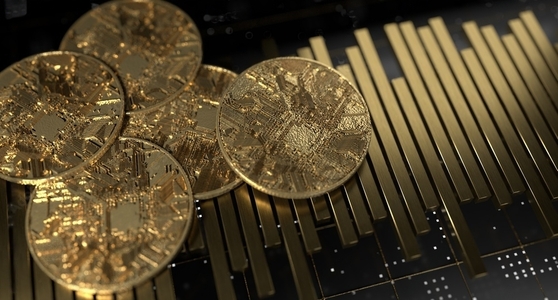Tokenization, a revolutionary concept in the world of finance and technology, has gained significant traction in recent years. It involves the digitization of real-world assets, enabling them to be represented and traded in a digital format. In this article, we will explore the tokenization of commodities and how it enhances efficiency and accessibility within this sector. As we explore the benefits of tokenizing commodities, platforms like SyntroCoin Platform are at the forefront, offering innovative online trading solutions that significantly enhance market accessibility and efficiency.
The concept of tokenization of commodities
The tokenization of commodities brings forth numerous benefits for market participants. Firstly, it increases the liquidity of traditionally illiquid assets. By converting commodities into digital tokens, it becomes easier for investors to buy, sell, and trade fractional ownership of these assets, unlocking new investment opportunities and diversification possibilities.
Moreover, tokenization enhances accessibility to the commodities market. Historically, investing in commodities required substantial capital and expertise. With tokenization, the barriers to entry are significantly lowered, allowing a broader range of investors to participate in this asset class. This democratization of access not only promotes inclusivity but also fosters market efficiency.
How tokenization works
Tokenization involves creating a digital representation of a commodity on a blockchain. Each digital token represents a specific quantity or fraction of the underlying asset. Blockchain technology, with its decentralized and immutable nature, ensures the security and transparency of these digital tokens.
By leveraging smart contracts, tokenized commodities can be programmed with specific conditions, such as governing the rights and obligations associated with ownership, facilitating automated transactions, and enabling real-time tracking and verification of ownership transfers.
Advantages of tokenization
The advantages of tokenization extend beyond liquidity and accessibility. Fractional ownership, enabled through tokenization, allows investors to own a portion of a commodity rather than requiring them to purchase the entire asset. This fractional ownership model not only reduces the financial burden but also enables diversification across multiple assets.
Additionally, tokenization reduces transaction costs associated with buying, selling, and transferring commodities. Traditional markets often involve intermediaries, such as brokers and clearinghouses, which add complexity and fees to transactions. Through tokenization, these intermediaries can be bypassed, resulting in lower costs and faster settlement times.
Furthermore, tokenization enhances transparency and security. Blockchain technology ensures that all transactions are recorded on a public ledger, which can be verified by all participants. This transparency reduces the risk of fraud and provides a high level of confidence in the integrity of the market.
Tokenization in the commodities market
Several real-world examples highlight the potential of tokenization in the commodities market. For instance, precious metals like gold and silver can be tokenized, allowing investors to own a fraction of these assets without the need for physical custody. Similarly, agricultural commodities, such as wheat or coffee, can be tokenized, enabling investors to participate in the value chain of these essential commodities.
The introduction of tokenization has the potential to disrupt the commodities market by unlocking liquidity, facilitating fractional ownership, and enabling seamless global trading. However, the full impact of tokenization on the market is still in its early stages and requires further exploration.
Challenges and considerations
While tokenization offers numerous benefits, it also presents challenges and considerations that need to be addressed. Regulatory concerns, such as compliance with securities laws and anti-money laundering regulations, require careful attention to ensure the legality and legitimacy of tokenized commodities.
Moreover, the price volatility of commodities poses a significant risk. Tokenized commodities may still be subject to price fluctuations driven by supply and demand dynamics. Investors must be aware of the inherent risks associated with commodity investments, even in tokenized form.
Additionally, the adoption of tokenization in the commodities market may face hurdles such as the need for technological infrastructure, industry-wide collaboration, and market education. Overcoming these obstacles will be crucial for the widespread adoption of tokenization in the industry.
Future prospects and potential developments
The future of tokenization in the commodities market looks promising. As blockchain technology continues to evolve and gain mainstream acceptance, the growth of tokenization is expected to accelerate. The integration of tokenization with other emerging technologies, such as artificial intelligence and the Internet of Things, can further enhance efficiency and enable new use cases.
Moreover, the expansion of tokenization beyond commodities is also a possibility. Other asset classes, including real estate, artwork, and intellectual property, can potentially benefit from the advantages offered by tokenization.
Conclusion
Tokenization of commodities brings numerous benefits to the market, including enhanced liquidity, increased accessibility, fractional ownership, lower transaction costs, transparency, and security. While challenges exist, such as regulatory considerations and adoption hurdles, the potential impact of tokenization on the commodities market is significant. As the industry continues to evolve and embrace this disruptive technology, tokenization has the potential to reshape the way commodities are bought, sold, and traded.
